The Zener Diode Market is estimated to be valued at USD 955.1 million in 2025 and is projected to reach USD 1710.4 million by 2035, registering a compound annual growth rate (CAGR) of 6.0% over the forecast period. This reflects an absolute dollar opportunity of USD 1.7 billion, signaling steady market momentum. Between 2025 and 2030, the market is projected to grow from USD 1.9 billion to USD 2.5 billion, representing an incremental gain of USD 600 million. The year-over-year (YoY) growth ranges from 5.3% to 6.0%, highlighting consistent performance supported by material innovation and growing demand across multiple sectors. From 2030 to 2035, the market is expected to continue expanding at a healthy rate, moving from USD 2.5 billion to USD 3.6 billion, driven by increasing adoption in electronics, medical devices, aerospace, and structural applications.
The unique properties of metallic glasses, including high strength, corrosion resistance, and superior elasticity, are attracting industries seeking advanced materials with high performance-to-weight ratios. Moreover, the miniaturization trends in electronics and the push for lightweight materials in the automotive and aerospace industries are expected to strengthen the demand curve. The market's upward trajectory indicates a robust future, propelled by continued R&D investment and scaling of production technologies.
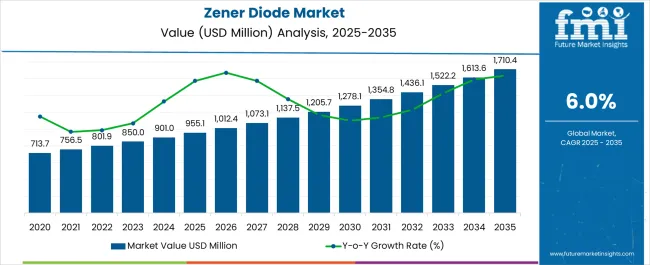
| Metric | Value |
|---|---|
| Zener Diode Market Estimated Value in (2025 E) | USD 955.1 million |
| Zener Diode Market Forecast Value in (2035 F) | USD 1710.4 million |
| Forecast CAGR (2025 to 2035) | 6.0% |
The Zener diode market is experiencing consistent growth driven by the rising demand for voltage regulation solutions in compact electronic devices, embedded systems, and power management circuits. Miniaturization trends in consumer electronics and the proliferation of connected devices have increased the need for components that offer reliable voltage clamping and surge protection.
Advancements in semiconductor fabrication and packaging technologies have enhanced the efficiency and thermal stability of Zener diodes, making them suitable for integration into increasingly dense circuit designs. Additionally, the growth of 5G infrastructure and automotive electronics has expanded application scopes across several high performance sectors.
Regulatory focus on energy efficiency and circuit protection continues to reinforce the role of Zener diodes in global electronics manufacturing. With demand rising across both industrial and consumer verticals, the market outlook remains strong as manufacturers focus on innovation and volume production efficiency.
The zener diode market is segmented by type, end users, and geographic regions. By type of the zener diode market is divided into Surface Mount Technology and Through Hole Technology. In terms of end users of the zener diode market is classified into Telecommunications, Industrial, Automotive, Consumer Electronics, Computing, and Others. Regionally, the zener diode industry is classified into North America, Latin America, Western Europe, Eastern Europe, Balkan & Baltic Countries, Russia & Belarus, Central Asia, East Asia, South Asia & Pacific, and the Middle East & Africa.
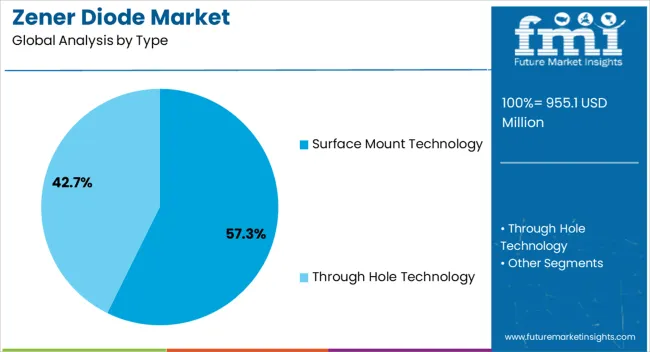
The surface mount technology segment is expected to hold 57.30% of total market revenue by 2025 within the type category, making it the leading configuration. This dominance is driven by its suitability for compact device designs, automated assembly processes, and reduced board space requirements.
Surface-mount Zener diodes are favored for their high reliability and lower parasitic inductance, which supports higher frequency operations. Their compatibility with modern manufacturing lines enhances production throughput and cost efficiency.
Additionally, the rise of wearables, smartphones, and compact industrial control units has elevated demand for surface mount solutions. With increasing pressure on electronics manufacturers to optimize space and improve energy performance, surface mount technology remains the dominant approach in Zener diode packaging.
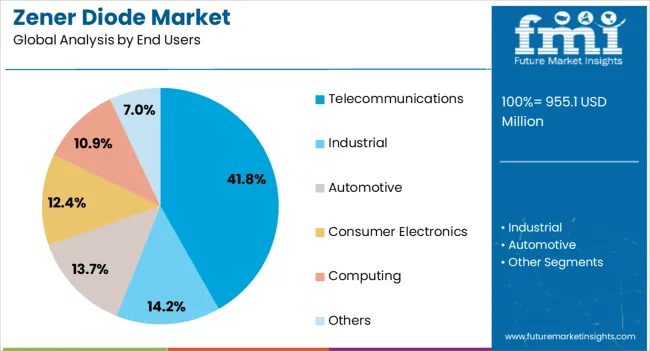
The telecommunications segment is projected to contribute 41.80% of overall market revenue by 2025 within the end users category, establishing it as the most prominent application area. This is due to the extensive use of Zener diodes in signal conditioning, overvoltage protection, and voltage regulation in telecom circuits and infrastructure.
As network complexity grows with the rollout of 5G and fiber-based communication systems, demand for robust protection components has surged. Zener diodes ensure operational stability across base stations, routers, and switching systems by safeguarding sensitive circuitry.
Additionally, the requirement for uninterrupted data transmission and improved system durability in telecom operations has encouraged widespread adoption. With telecom providers investing in infrastructure upgrades and rural expansion, this segment continues to lead due to its critical dependence on voltage regulation components like Zener diodes.
The metallic glasses market is gaining momentum due to the growing demand for materials that offer superior strength, high elasticity, and corrosion resistance across electronics, aerospace, biomedical, and defense sectors. These amorphous alloys, often called bulk metallic glasses (BMGs), exhibit unique properties like high hardness and excellent wear resistance, making them suitable for structural and functional components. The absence of crystalline structure enables precise molding and complex geometries. As industries pursue lightweight, high-performance materials, metallic glasses continue to present strong alternatives to conventional metals and ceramics.
The use of metallic glasses in electronic casings, precision sensors, and wearable device components is expanding. Their combination of high strength and aesthetic finish makes them ideal for smartphone frames, bezels, and housings. Unlike traditional metals, they offer superior durability while maintaining slim form factors. Their non-magnetic and corrosion-resistant nature is especially advantageous for miniaturized components and biomedical wearables. Manufacturers benefit from net-shape casting capabilities that reduce machining and post-processing steps, thereby improving production efficiency. As consumer electronics move toward more rugged, lightweight, and stylish designs, demand for metallic glasses in casing and connector applications continues to rise. With growing requirements for both form and function in wearables and mobile technology, metallic glasses enable design freedom without compromising durability or performance. This makes them an attractive material choice in next-generation electronics manufacturing, where material behavior under thermal, electrical, and mechanical stress is critical.
Metallic glasses are gaining traction in biomedical applications such as surgical tools, orthopedic implants, and dental devices. Their biocompatibility, resistance to corrosion in bodily fluids, and high mechanical strength offer clear benefits over conventional stainless steel or titanium. The amorphous structure reduces the risk of bacterial colonization and offers smoother surface finishes, enhancing hygiene and healing outcomes. These materials also allow for precision fabrication of small, complex shapes needed in minimally invasive instruments. As medical devices evolve toward personalized, minimally invasive solutions, manufacturers are looking for materials that support fine geometries and superior wear resistance. Although still limited by cost and availability, metallic glasses are increasingly considered for premium or critical-use components where reliability and patient safety are paramount. Ongoing clinical research and certification efforts are helping open new applications, enabling a slow but steady market penetration in specialized biomedical use cases.
Aerospace and defense sectors value metallic glasses for their exceptional strength-to-weight ratio, impact resistance, and structural stability under extreme conditions. These properties make them suitable for lightweight structural components, vibration-damping parts, and even protective armor systems. The absence of grain boundaries in metallic glasses reduces the chances of crack initiation and propagation, improving fatigue resistance over traditional alloys. Components made from metallic glasses are also less prone to failure due to thermal cycling, which is critical in aerospace systems exposed to fluctuating temperatures. Their ability to undergo precision casting without shrinkage or warping supports the manufacture of high-tolerance parts. While cost and production scale still limit widespread adoption, interest remains high in research and pilot programs for advanced air and space vehicle parts. Continued focus on lightweighting and extreme performance in aerospace missions supports the long-term integration of metallic glasses into these high-value applications.
Despite their performance advantages, metallic glasses face challenges in widespread industrial adoption due to production complexity and high material costs. Manufacturing requires precise thermal control and rapid cooling to prevent crystallization, which limits scalability and increases energy consumption. The availability of only a few commercial-grade metallic glass alloys restricts design flexibility, especially in applications needing specific mechanical or thermal properties. Compared to traditional metals, the tooling and processing equipment needed to mold or shape metallic glasses can be expensive and difficult to integrate into existing lines. Inconsistencies during casting or cooling can also lead to performance defects, making quality assurance more demanding. These limitations are particularly problematic for high-volume, cost-sensitive industries like automotive. Until scalable processing methods and alloy diversification improve, the use of metallic glasses will likely remain confined to high-performance, low-volume applications. Overcoming these constraints is essential for the material to gain broader industrial acceptance.
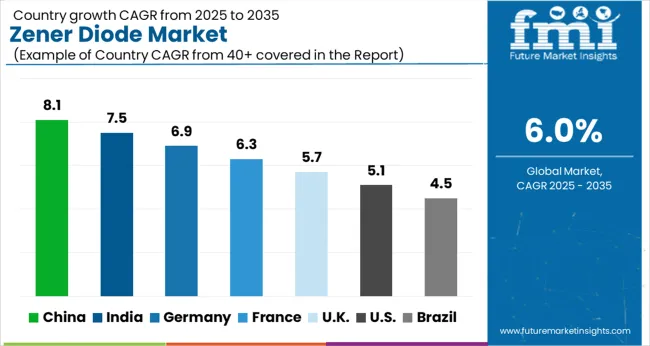
| Countries | CAGR |
|---|---|
| China | 8.1% |
| India | 7.5% |
| Germany | 6.9% |
| France | 6.3% |
| UK | 5.7% |
| USA | 5.1% |
| Brazil | 4.5% |
The global metallic glasses market is projected to grow at a CAGR of 6.5% through 2035, supported by increasing use in electronics, medical devices, and structural applications requiring high strength-to-weight ratios. Among BRICS nations, China leads with 8.8% growth, driven by advancements in alloy casting and integration into consumer electronics. India follows at 8.1%, where research initiatives and limited-scale manufacturing have expanded applications in precision tools and automotive components. In the OECD region, Germany reports 7.5% growth, supported by regulated production methods and high-performance material demand. France, growing at 6.8%, has maintained adoption in instrumentation, aerospace, and micro-component industries. The United Kingdom, at 6.2%, reflects steady use in academic prototyping, wearable technologies, and defense-related materials. Market activity has been shaped by metallurgical standards, processing constraints, and end-use qualification procedures. This report includes insights on 40+ countries; the top five markets are shown here for reference.
Robust deployment of metallic glasses across precision components and industrial tooling has pushed the China market to a CAGR of 8.8%. Strong interest has been observed from electronics firms manufacturing casings and cores requiring high strength-to-weight ratios. Manufacturing clusters have shifted alloy designs toward zirconium- and palladium-based types with improved amorphous structure retention. Usage in robotics and automation tool heads has contributed to specialized batch production. Defense sector suppliers have adopted high-density metallic glasses for shock-resistant parts. Foundries have operated with modified casting chambers to support amorphous material handling. Contract facilities have delivered strip forms and powder variants to magnetic and electronic component assemblers. Local demand has also grown for non-crystalline alloys in thermal barrier and wear-resistant coatings.
India’s metallic glasses market has advanced steadily, maintaining a CAGR of 8.1%, with usage evident in electronics packaging, magnetic shielding, and wear-resistant surfaces. Procurement has been driven by the expansion of domestic foundry operations supporting component hardening and casing applications. Demand from educational research units and metallurgical labs has ensured steady uptake of rod and ribbon forms. Tooling subcontractors have applied metallic glass inserts for dies and molds in low-volume production. Adoption of bulk metallic glasses has grown in the machining sector for precision fittings. Magnetism-sensitive parts have been developed using iron-based amorphous structures. Sheet forms have been distributed to aerospace and automotive R&D centers. Powdered variants have been blended into composites for pilot-scale mechanical testing.

Across Germany, a CAGR of 7.5% has been recorded in the metallic glasses market, with consistent activity in the automotive, optics, and tooling segments. Industrial suppliers have transitioned to amorphous structures for reduced mechanical loss and improved surface wear. High-precision component makers have favored metallic glasses in pump systems and laser mounts. Rod extrusion units have upgraded cooling techniques to retain amorphous consistency. Academic institutes have utilized metallic glass samples in microstructure studies and applied mechanics simulations. Injection mold makers have applied copper-based blends for improved surface performance. Industrial gear manufacturers have sourced metallic glass layers for vibration damping. Small-scale test runs have been carried out in additive manufacturing setups. Specialized casting machines have been installed in southern Germany.
France has exhibited CAGR growth of 6.8% in the metallic glasses sector, with adoption noted in biomedical, industrial machinery, and military components. Biocompatible metallic glasses have been incorporated into orthopedic fasteners and dental implants. Mechanical part fabricators have applied amorphous alloys in load-bearing and precision-critical fixtures. Small-batch producers have relied on copper- and iron-based ribbons for thermal sensors and magnetic couplings. Defense-grade use cases have included blade edges and casings that require fracture toughness. Metal injection molders have integrated metallic glass feedstock in micro-injection units. Research collaborations between public labs and foundries have led to increased alloy variety. Use in fast-response actuators and heat exchangers has shown upward momentum. Applications in customized wear-resistant layering have added niche demand.
Within the United Kingdom, the metallic glasses market has maintained a CAGR of 6.2%, with expanding usage across tooling inserts, electronics, and design prototypes. Rod and strip forms have been supplied to toolmakers for high-stress, low-volume press tools. Precision electronics firms have explored applications in compact magnetic enclosures and transformer cores. Composite researchers have investigated blends with thermoplastics and ceramics for lightweight structural layering. Manufacturers of aerospace fixtures have evaluated metallic glasses for bracketry and thermal isolation. Trial deployments have occurred in creative prototyping where fine surface finish and shape memory are prioritized. Sourcing has been diversified through regional distributors aligned with academic and technical buyers. Alloys with improved corrosion resistance have been favored in marine and lab-based setups.
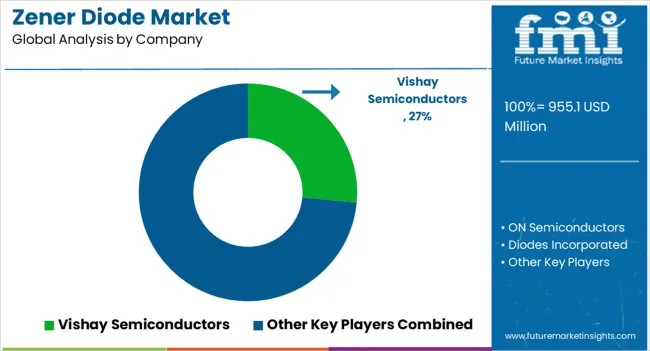
The metallic glasses market is supported by a specialized group of suppliers producing amorphous alloys known for their exceptional strength, elasticity, and corrosion resistance, widely used in electronics, aerospace, medical devices, and precision tools. Liquidmetal Technologies Inc. leads the market with proprietary bulk metallic glass (BMG) formulations used in high-performance components requiring near-net-shape molding and superior mechanical properties. Amorphology Inc., a spin-off from NASA’s Jet Propulsion Laboratory, offers space-grade amorphous metal parts focused on precision gears and advanced industrial applications. Asian manufacturers such as Antai Technology Co., Ltd., EPSON ATMIX Corporation, and Qingdao Yunlu Advanced Materials Technology Co., Ltd. play a growing role in producing amorphous alloy powders and parts at scale, supplying local electronics and automotive sectors. Hitachi Metals Ltd. and Usha Amorphous Metals Limited are significant regional contributors, focusing on magnetic metallic glasses for power distribution and transformer cores. European suppliers like Exmet AB, Glassimetal Technology, and PX Group SA provide customized BMG products for watches, surgical tools, and consumer electronics, where high strength and precision formability are essential. Heraeus Holding and Materion Corporation bring material science expertise, offering tailored metallic glass solutions for medical implants, semiconductor packaging, and structural components. PrometalTech and RS Alloys contribute to niche market segments with application-specific amorphous alloys. As demand for lightweight, high-performance materials rises, these suppliers continue refining processing methods like injection molding and additive manufacturing to meet expanding needs in advanced manufacturing sectors.
| Item | Value |
|---|---|
| Quantitative Units | USD 955.1 Million |
| Type | Surface Mount Technology and Through Hole Technology |
| End Users | Telecommunications, Industrial, Automotive, Consumer Electronics, Computing, and Others |
| Regions Covered | North America, Europe, Asia-Pacific, Latin America, Middle East & Africa |
| Country Covered | United States, Canada, Germany, France, United Kingdom, China, Japan, India, Brazil, South Africa |
| Key Companies Profiled | Vishay Semiconductors, ON Semiconductors, Diodes Incorporated, Toshiba Corporation, NXP Semiconductors, N.V., ROHM Semiconductors, and Anova Technologies |
| Additional Attributes | Dollar sales vary by type, including surface mount (SMT) and through-hole diodes; by application, spanning consumer electronics, automotive, industrial, telecommunications, computing, and renewable systems; by region, with Asia-Pacific, North America, and Europe leading. Growth is driven by EV adoption, miniaturization, surge protection, and electronics proliferation. |
The global zener diode market is estimated to be valued at USD 955.1 million in 2025.
The market size for the zener diode market is projected to reach USD 1,710.4 million by 2035.
The zener diode market is expected to grow at a 6.0% CAGR between 2025 and 2035.
The key product types in zener diode market are surface mount technology and through hole technology.
In terms of end users, telecommunications segment to command 41.8% share in the zener diode market in 2025.






Full Research Suite comprises of:
Market outlook & trends analysis
Interviews & case studies
Strategic recommendations
Vendor profiles & capabilities analysis
5-year forecasts
8 regions and 60+ country-level data splits
Market segment data splits
12 months of continuous data updates
DELIVERED AS:
PDF EXCEL ONLINE
Power Diodes Market
SMD TVS Diodes Market Size and Share Forecast Outlook 2025 to 2035
Limiter Diodes Market Size and Share Forecast Outlook 2025 to 2035
Tunable Diode Laser Analyzer (TDLA) Market Growth - Trends & Forecast 2025 to 2035
Schottky Diodes Market Size and Share Forecast Outlook 2025 to 2035
Varactor Diode Market Size and Share Forecast Outlook 2025 to 2035
Light Emitting Diode (LED) Backlight Display Market Size and Share Forecast Outlook 2025 to 2035
Field-effect Rectifier Diodes Market
Chip-On-Board (COB) Light Emitting Diode (LED) Market Analysis and Forecast 2025 to 2035, By Application and Region
High-Brightness Light-Emitting Diodes (LED) Headlamps Market Size and Share Forecast Outlook 2025 to 2035

Thank you!
You will receive an email from our Business Development Manager. Please be sure to check your SPAM/JUNK folder too.
Chat With
MaRIA